Sakana no Nitsuke is one of the most classic and iconic Japanese dishes, typically prepared using white fish. The delicate flavor of the fish pairs perfectly with the sweet and savory sauce, creating a beautifully balanced taste that is distinctly Japanese.
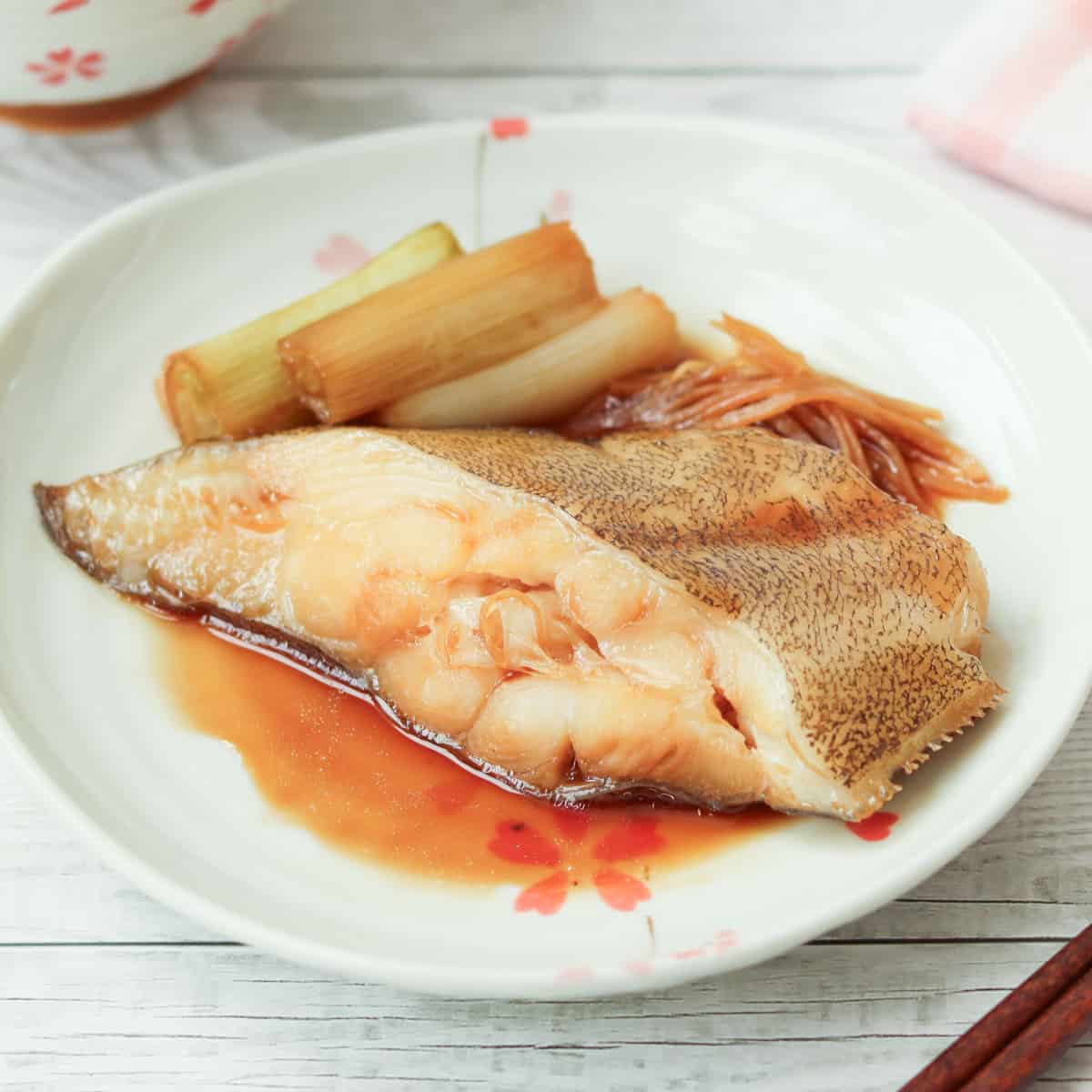
Jump to:
What is Sakana no Nitsuke?
Sakana no Nitsuke is a traditional Japanese dish made with fish simmered in a sauce primarily composed of Japanese seasonings such as sake, mirin, and soy sauce. "Sakana" means fish, "no" indicates possession (connecting the preceding and following words), and "Nitsuke" refers to dishes that are simmered to infuse flavors.
It is one of the most common dishes in Japan, typically featuring simmered white fish. The rich, sweet-savory sauce complements the mild flavor of the fish, making it truly distinctive. The leftover sauce also pairs well with white rice.
In this recipe, I use fish fillets to make preparation easier at home, but you can also use a whole fish as long as it has been cleaned (with the scales, gills, and guts removed). The combination of the fish and the sweet-savory sauce is delightful. Feel free to give it a try and experience the traditional flavors of Japan.

Choosing the right fish
Let's take a closer look at the types of white fish typically used in this dish.
You can use a wide variety of fish in this dish. In Japan, flounder, cod, and kinmedai (alfonsino) are popular choices. As long as it is a white fish, any kind will work—so feel free to use whatever is fresh and available in your area.
You can also use oily, dark-fleshed fish like mackerel or sardines, but keep in mind that they will give the dish a bolder, more pronounced flavor. In Japan, these types of fish are often prepared in dishes such as misoni (fish simmered in miso sauce), which helps tone down their strong fishy smell.
How to remove the odor of fish
To enhance the flavor of this dish, you should prepare the fish fillets in a way that reduces any fishy smell. The following preparation methods are commonly used:
- Sprinkle sake over the fillets and let them sit for about 5 minutes.
- Evenly sprinkle salt, about 2% of the fish’s weight, on both sides of the fillets. Then, let them sit in the refrigerator for a few hours to draw out excess moisture. Afterward, pat the fillets dry thoroughly.
- Make a cross-shaped incision in the fillets and blanch them briefly for 5-10 seconds. Then, cool them in an ice bath.
In this recipe, I have shared the easiest and quickest method: sprinkling sake over the fillets. However, if you are still concerned about any lingering odor, you can combine this with the other methods for better results.
Simple guide to otoshi-buta (drop lid)
In Japan, when making this dish—or really, simmered dishes in general—it is common to use an otoshi-buta (drop lid).
An otoshi-buta is a lid that sits directly on top of the ingredients in a pot or pan. Placing the lid directly on the ingredients allows the cooking liquid underneath to circulate more evenly, resulting in more efficient simmering with less liquid.
Commercial versions are available, but you can easily make one yourself by simply poking a large hole or several small ones in a sheet of aluminum foil—as shown in the photo above. The holes help prevent the otoshi-buta from floating up due to steam pressure. You can use a regular lid instead, but since it is so easy to make, I recommend giving it a try.
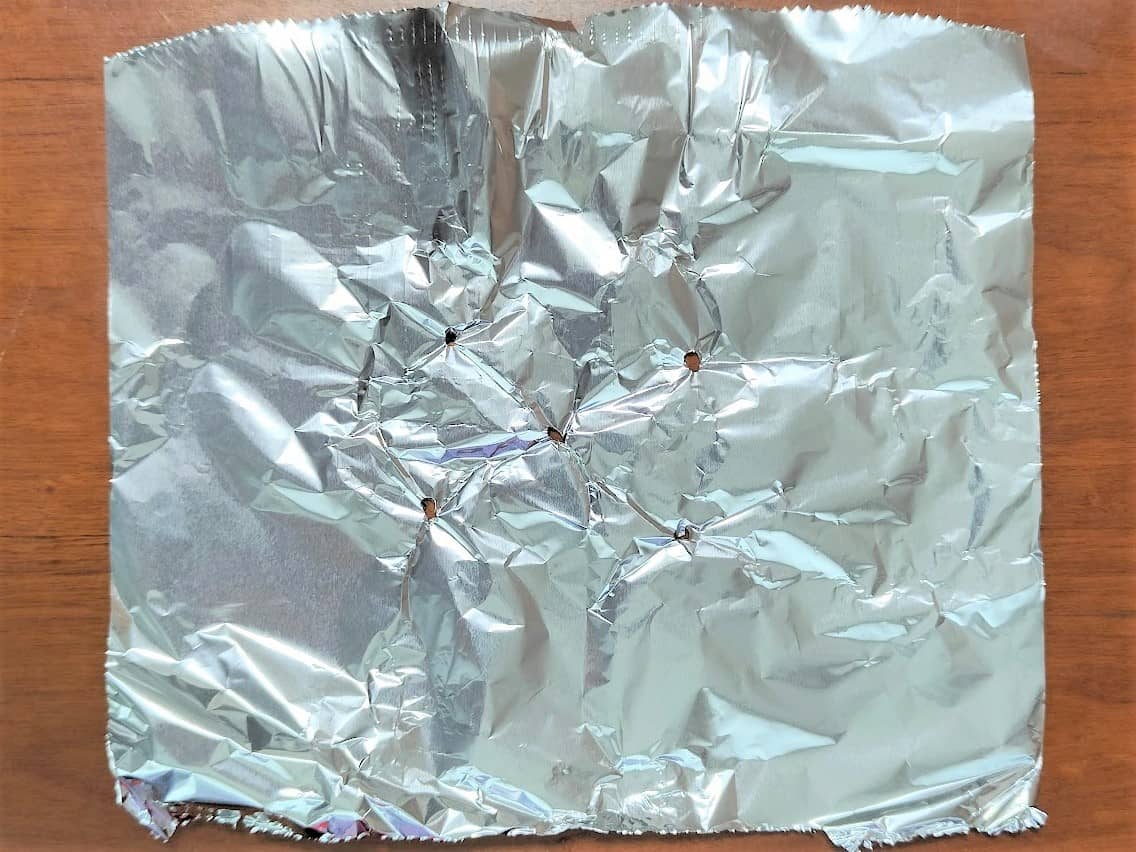
📋Step-by-step recipe
Equipment
- otoshi-buta (drop-lid) (You can easily make one by following the instructions above. If that seems like too much trouble, you can simply use a regular lid instead.)
Ingredients
- 2 white fish fillets (such as flounder, cod, kinmedai (alfonsino), or similar types)
- 1 Tbsp sake (for the fish fillets)
- 3.5 oz Japanese leek (naganegi) (can be substituted with regular leek)
- 0.35 oz ginger
- ¼ cup water
Seasonings:
- ¼ cup sake
- 2 Tbsp mirin
- 2 tsp sugar
- 2 Tbsp soy sauce
Instructions
🕒 Total: 20 mins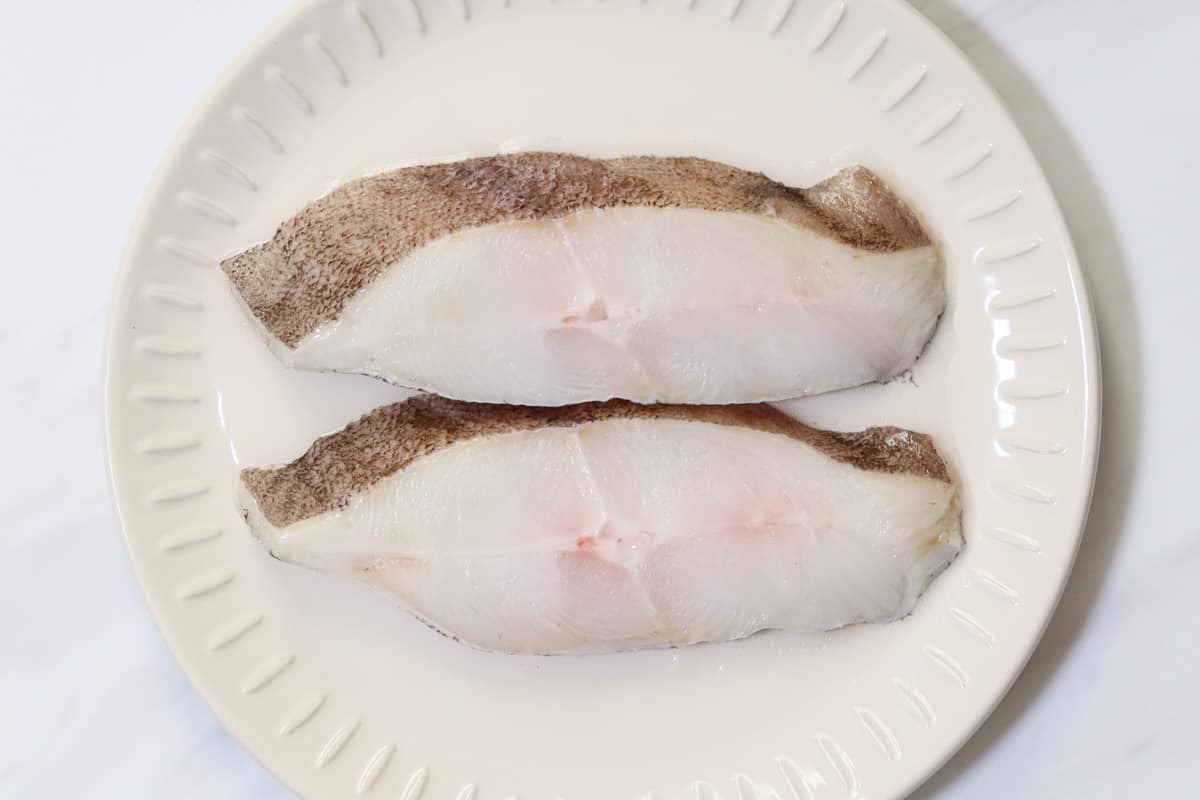
Step 1
Sprinkle sake over the fish fillets and let them sit for about 5 minutes to reduce any fishy smell.
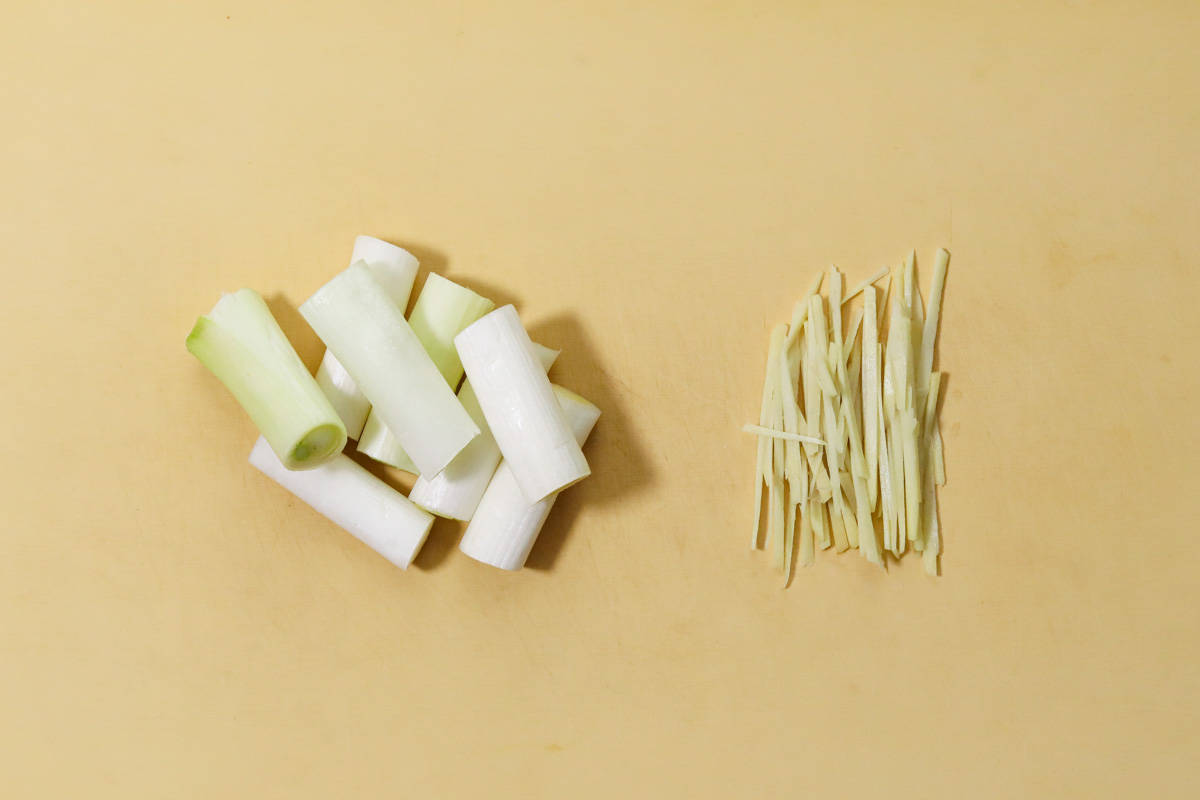
Step 2
Cut the Japanese leek into 2-inch (5 cm) pieces. Peel the ginger and cut it into long, thin strips.
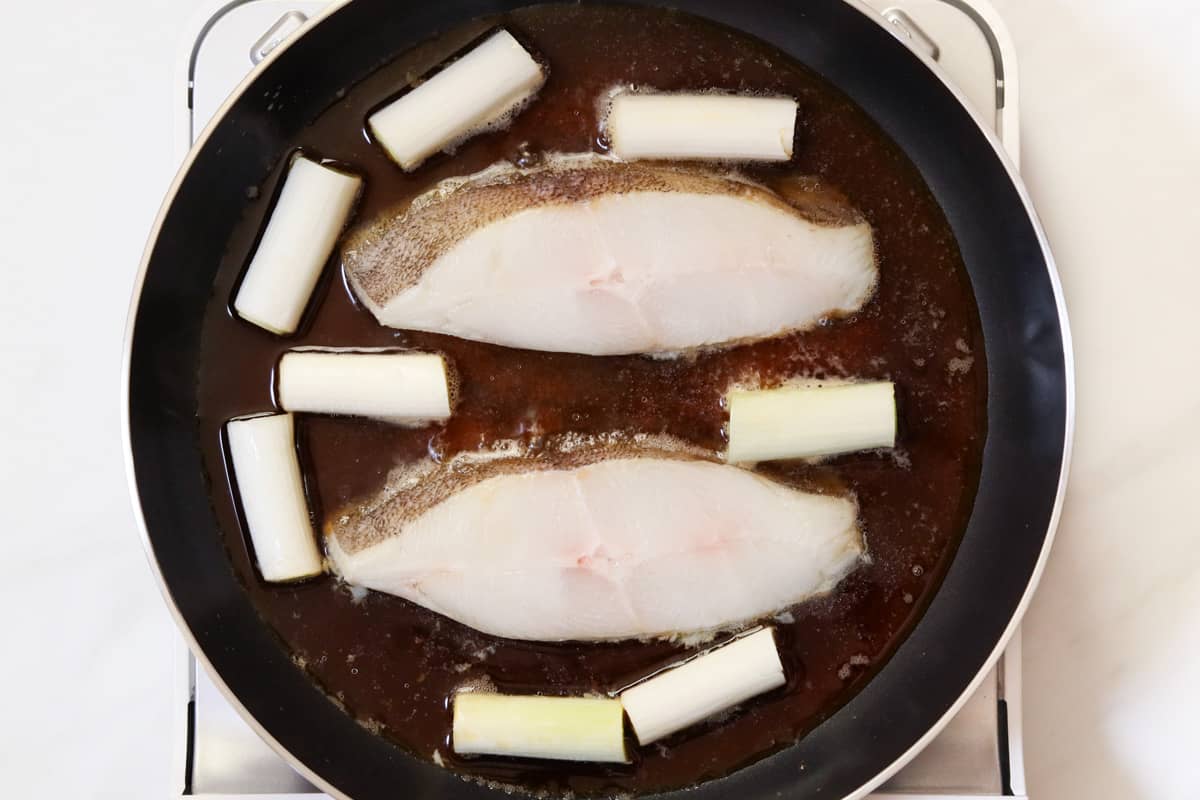
Step 3
Add water and the seasonings (sake, mirin, sugar, and soy sauce) to a pan and bring it to a boil over medium heat. Once boiling, add the fillets and leeks, cover with an otoshi-buta (drop lid), and let them simmer over low heat for 7 minutes.
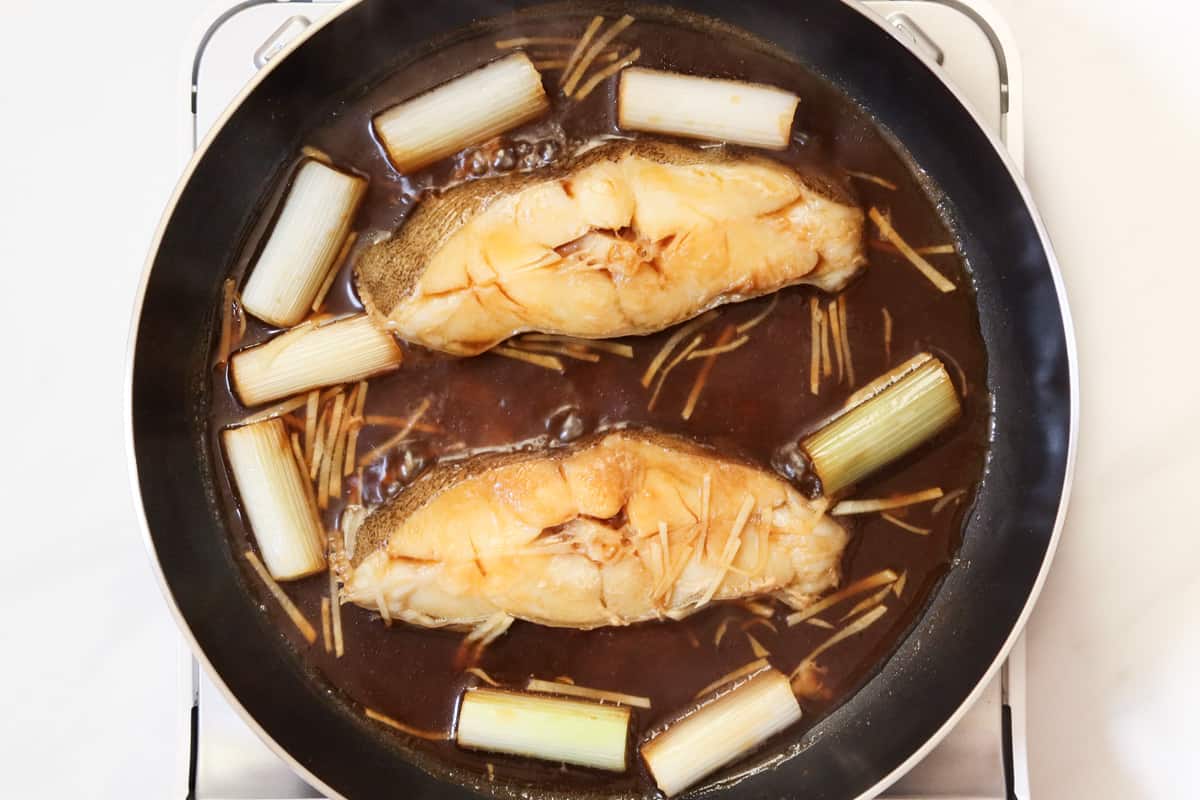
Step 4
Remove the otoshi-buta and increase the heat to medium. Add the shredded ginger to the pan, then continue simmering for about 3 minutes, occasionally spooning the cooking liquid over the fillets until it thickens slightly.
To store
You can store it in the refrigerator for up to 3 days.
If you try this recipe, I’d love to hear what you think. Please consider leaving a review and star rating in the comments below. If you enjoyed it, I’d really appreciate it if you shared it with your friends.
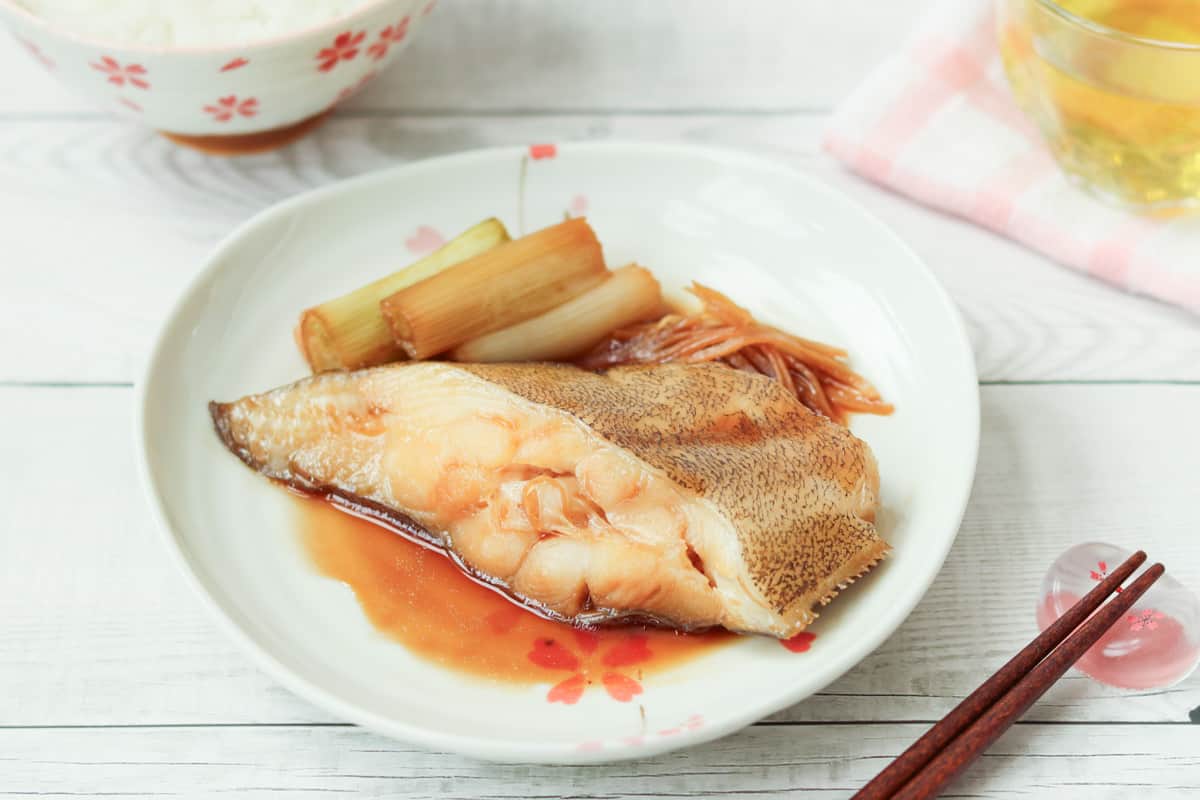
More fish recipes you'll love
Recipe card

Sakana no Nitsuke (Japanese Simmered Fish)
Equipment
- otoshi-buta (drop-lid) (You can easily make one by following the instructions above. If that seems like too much trouble, you can simply use a regular lid instead.)
Ingredients
- 2 white fish fillets (such as flounder, cod, kinmedai (alfonsino), or similar types)
- 1 Tbsp sake (for the fish fillets)
- 3.5 oz Japanese leek (naganegi) (can be substituted with regular leek)
- 0.35 oz ginger
- ¼ cup water
Seasonings:
- ¼ cup sake
- 2 Tbsp mirin
- 2 tsp sugar
- 2 Tbsp soy sauce
Instructions
- Sprinkle sake over the fish fillets and let them sit for about 5 minutes to reduce any fishy smell.
- Cut the Japanese leek into 2-inch (5 cm) pieces. Peel the ginger and cut it into long, thin strips.
- Add water and the seasonings (sake, mirin, sugar, and soy sauce) to a pan and bring it to a boil over medium heat. Once boiling, add the fillets and leeks, cover with an otoshi-buta (drop lid), and let them simmer over low heat for 7 minutes.
- Remove the otoshi-buta and increase the heat to medium. Add the shredded ginger to the pan, then continue simmering for about 3 minutes, occasionally spooning the cooking liquid over the fillets until it thickens slightly.
Notes
- You can store it in the refrigerator for up to 3 days.





Leave a Rating and a Comment